Clients are the lifeblood of any service-based business. But every new client brings a challenge — how do you successfully onboard them to achieve both a positive first impression and successful results from your services? Intake forms — when used correctly — make it much easier to smoothly onboard clients.
In this article, we’ll discuss why intake forms are so important in the client onboarding process. We’ll also share our easy-to-use intake form template, and explain how to standardize the process and create a consistent, high-quality experience for every client who works with you.
What is an intake form?
An intake form is a type of form used by someone in a business to collect client information during the intake process. The client intake process introduces the client to the business and collects the information needed to serve them well. Some questions on an intake form cover basic information, such as questions about a client’s name and contact information. But other questions can be more detailed and require more input from the client — for instance, when you ask a client to describe their biggest pain points.
Intake forms have more than one use case. They can be used in different scenarios, including:
- Capturing inquiries from new potential clients
- As a questionnaire before a sales call
- Collecting relevant information during the onboarding process
- As requests for medical history for health-related fields or access to financial information for law firms
- As a part of insurance CRM software to collect claim information
Many businesses use a form builder to create online forms, but some still create forms in a word processor and print them out. No matter which way you use to create a client intake form for your business, they’re a crucial part of working with clients and customers.
Why use an intake form?
Intake forms aren’t a pillar of client work by chance. They add order where there can be chaos, especially when you try to scale a business. Let’s take a look at a few of the key benefits.
Lets you focus on what matters during calls and meetings
First, intake forms allow you to save time on client kickoff calls because you won’t need to ask your new client questions that you already have the answers for. They also provide a certain structure that can help streamline the onboarding process. If you require clients to fill in an intake form before they book a kickoff date for their project, you can start preparing what they might need in advance.
Intake forms can also help you qualify and disqualify potential clients who inquire about your services.With information like desired services, company size, and more, you can decide whether to move on. Plus, they keep client information and assets organized instead of scattered across notebooks or spreadsheets.
Better estimate the scope of client projects
Finally, intake forms create a more accurate project roadmap. It’s difficult to estimate how long a project will take unless you have accurate information about your client and their goals. You’ll mitigate the risk of surprise problems later on in the project if you start off knowing about all the moving pieces. No matter the use case, intake forms provide clarity and structure for your projects.
What are some examples of intake forms?
Let’s explore how intake forms can help a wide variety of businesses in different situations.
1. Business consultation intake form
Intake forms are crucial for consultants who help with business strategy, marketing, technology consulting, and more. These forms help consultants fully understand their clients and the problems they’re trying to solve. Consultants can then customize their approach for every client.
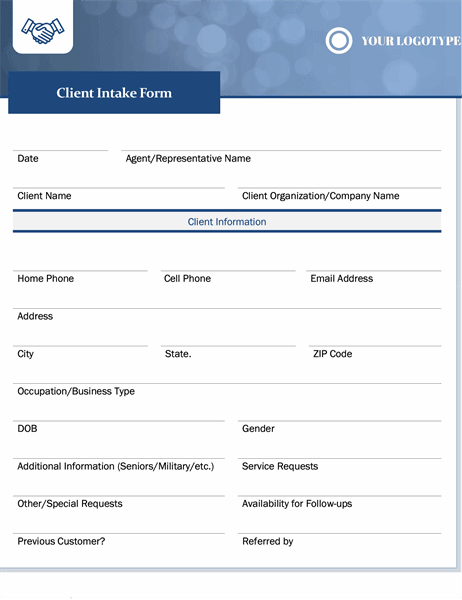
2. Business services intake form
Business services intake forms are useful for the execution of B2B projects. It’s similar to consulting, but usually requires more hands-on implementation from the business owner. Examples include website design, copywriting, rebranding, and ads management.
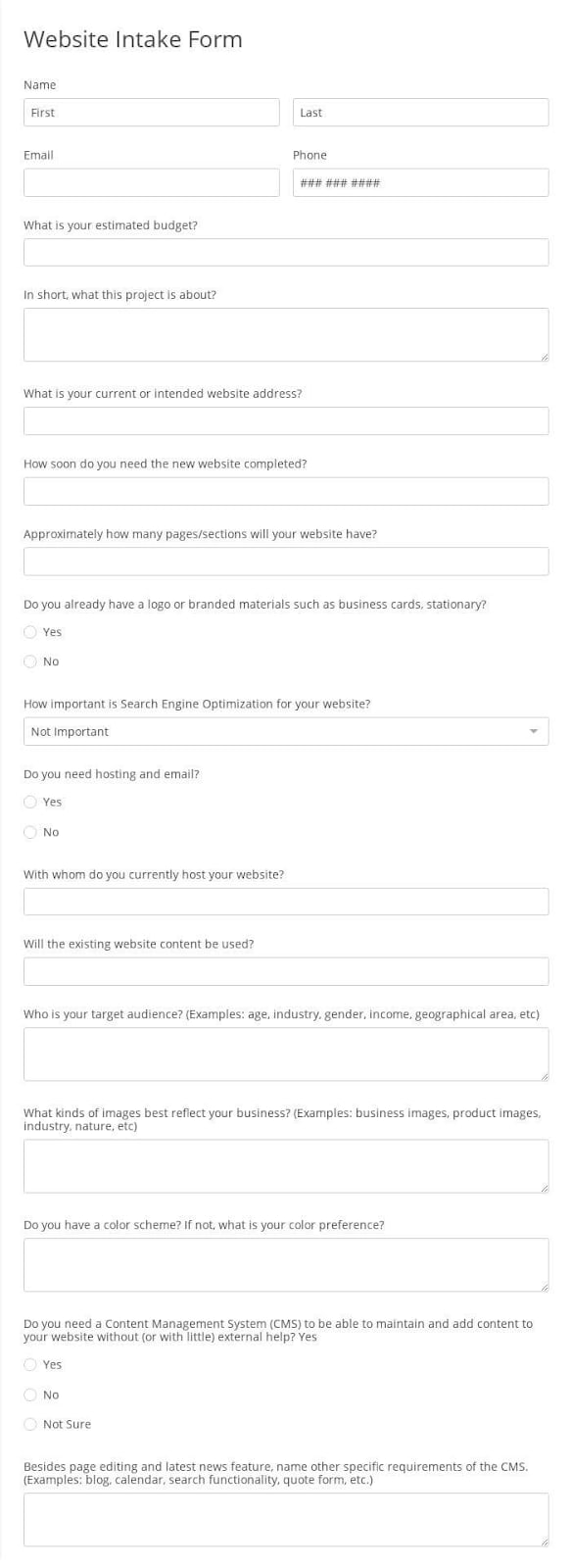
3. Small business intake form
Small business owners will also need to collect information from their clients. Some examples of small business owners include physical therapists, massage therapists, childcare service providers, and nutritionists.
Intake forms for small business owners are usually helpful to understand health and personal concerns — forms like these need to be HIPAA compliant if you’re working in the healthcare industry.
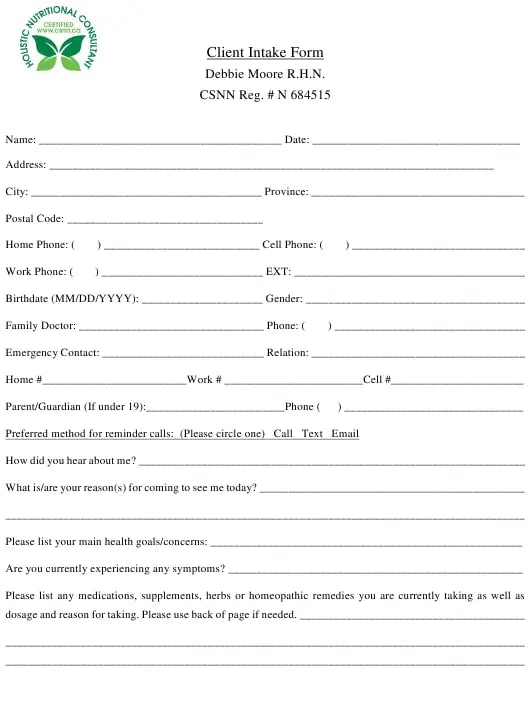
monday.com’s intake form template
Don’t want to have to monitor and copy and paste data from a separate form builder, or set up a form with HTML and custom code? Now you can create an intake form within your Work OS instead.
With monday.com, you can keep all client data on a single platform and stop the back and forth between different apps. monday.com has a fully-customizable intake form template that integrates directly with the rest of your business.

This free template — when you sign up for monday.com — lets you add as many or as few questions as you need for your unique intake forms. Customize the form to make it fit your branding by changing the background color, adding your logo, and more. You can even add columns that are hidden from the form for internal use only — like notes about client interactions or total deal value.
You can then share your form with potential clients online or in person — by bringing a tablet to a conference or event, for example. Because it’s connected to the monday.com Work OS, their answers automatically populate and create new items on your board, making it easy to stay on top of your client relationships.
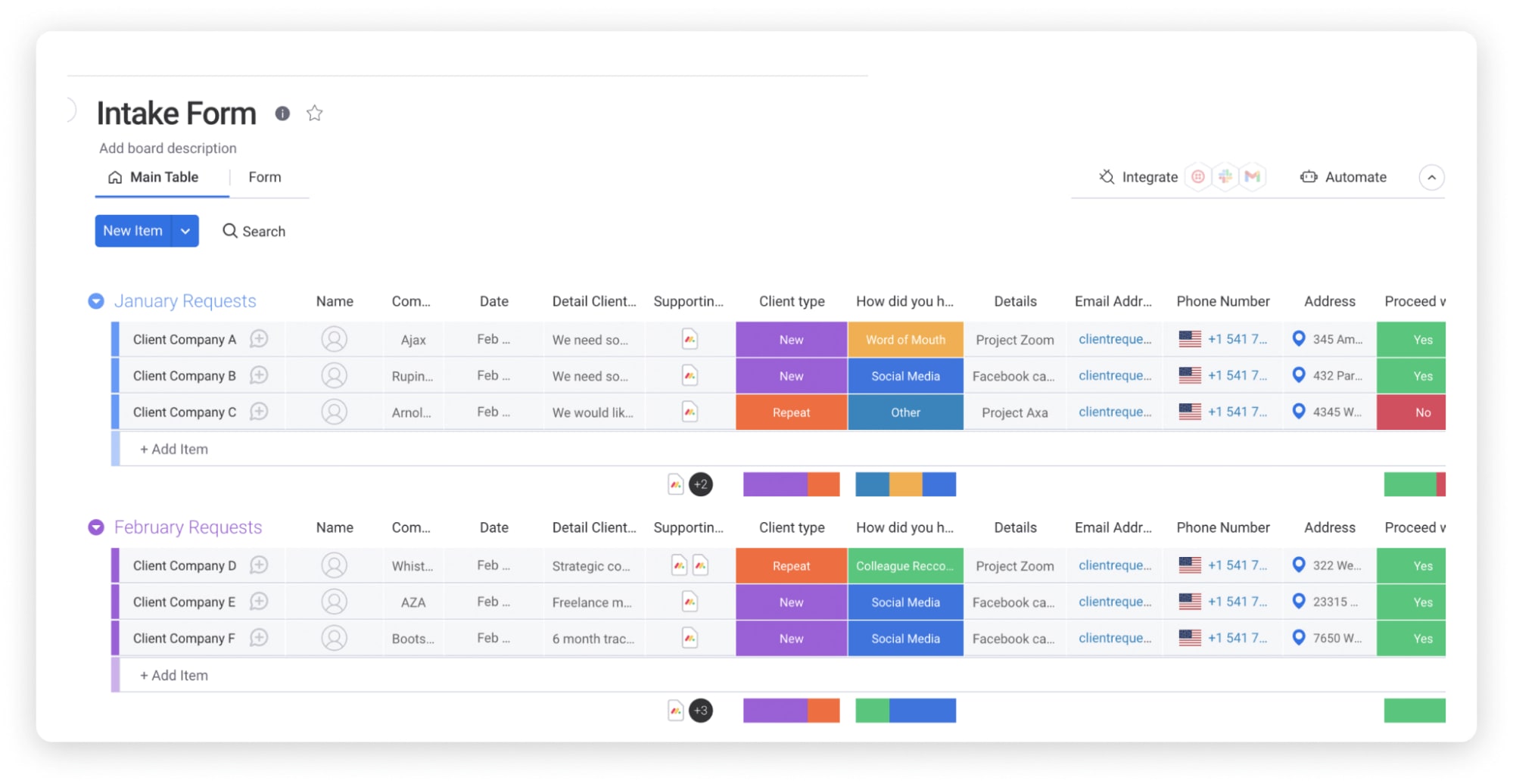
You can even embed your form on a webpage, as you would for a contact us page.
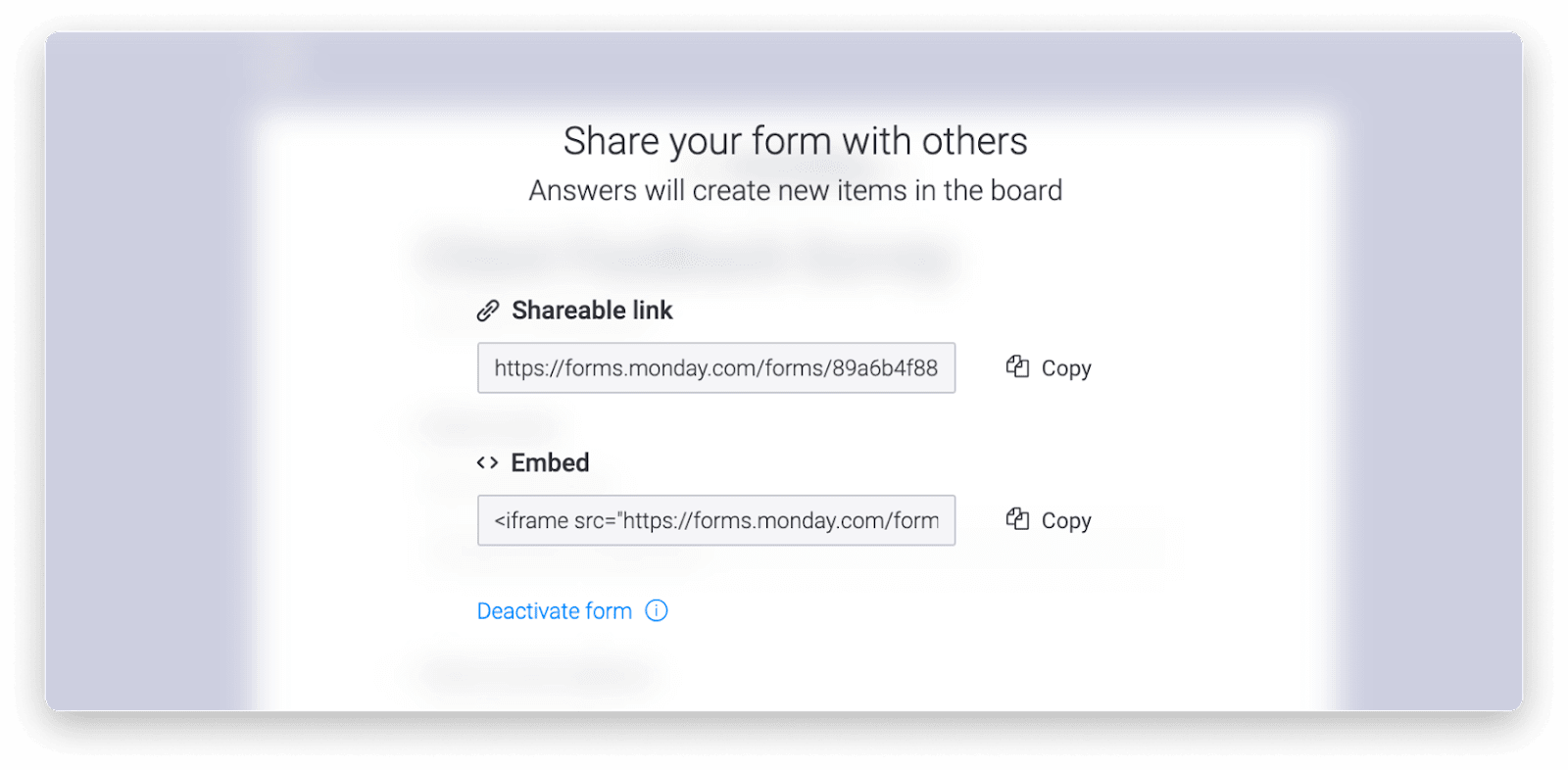
Intake form tips & tricks
Just using intake forms is great, but there’s more to it than that. Here is how you can optimize the way you use intake forms in your business.
1. Implement automations on your work OS
How much time do you spend doing tasks that you could otherwise be automating?
76% of companies used some level of automation in 2021, so it’s worth considering how automation could add value to your business. When you automate repetitive parts of your workflow, you free up your time to complete more valuable tasks and maximize your revenue.
That’s why you should automate your intake workflow by adding automations when someone completes an intake form. For example, when a client completes and submits their intake form, create a task for the account manager to review the answers. Or, when a new lead fills in the intake form on your website’s contact page, move them to the next step in your CRM.
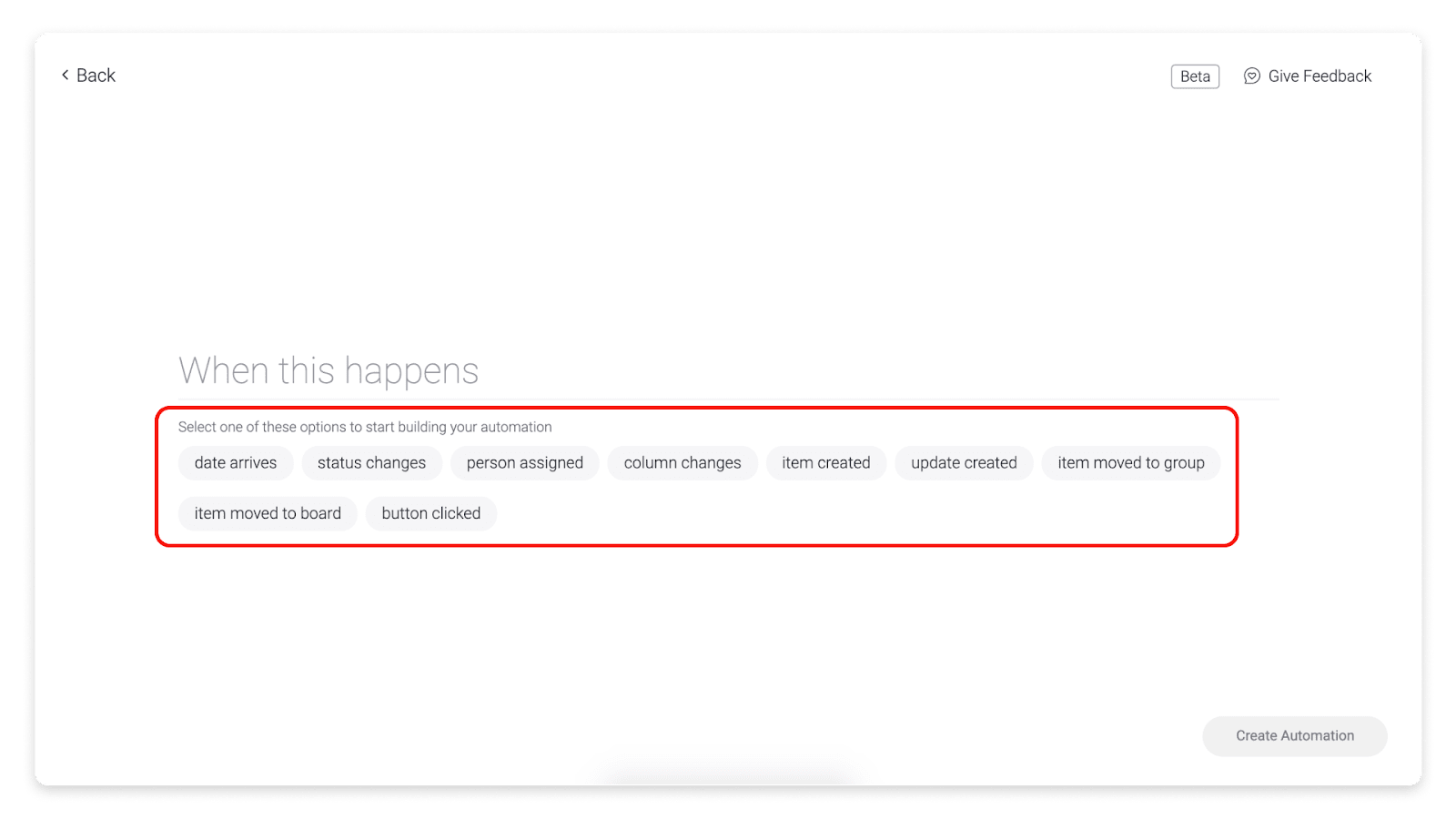
2. Use an intake form for every step in the customer journey
Intake forms are useful for more than just onboarding new clients. For instance, you use intake forms with new leads before they book a call with you. This allows you to qualify new leads so you don’t waste your time talking to people who aren’t a good fit for your business.
If you have existing clients who may request new projects from you, consider adding an intake form to let them complete those requests on their own. You can automate this process so that the right person gets assigned to review the request. No more losing potential projects by letting emails fall through the cracks.
3. Ask clients where they heard about you
Where do most of your paying clients come from? You can’t know unless you carefully track this information. So make sure you ask every new lead and customer where they’ve heard about you. And there’s no better way to make sure you don’t forget to ask than to add that question to your client intake form templates.
Once you know where most of your clients come from, you can spend more of your efforts on that. For instance, you may realize that you’ve been spending too much on paid ads when, in reality, 80% of your clients are coming through social media. Or maybe you’ll realize that you aren’t pulling in as many referrals as you’d like. Investing in a referral marketing platform may be beneficial and boost the number of referred clients.
FAQs about intake forms
What should be on an intake form?
What you should add to your intake form depends on your business and the type of projects and clients you take on. What services you offer and what industry you operate in will drastically change what type of intake forms you use.
Here are just some examples of what can be on an intake form:
- Basic client information (name, address, phone number, etc.): all types of intake forms should at least include this information
- Questions about the problem they’re dealing with: can be a personal problem or a business problem
- Questions about personal preferences: can help you tailor the service to each client
- Ideal project start date: helps you establish project schedules and priorities
- Allergy information: important for health-related services
Remember that you can edit your intake form at any time. If you’re not sure you’ve thought of everything you should include, launch your form as is, and adapt it as you go. With each new client, you’ll see how well the information works for what you need to do.
What does intake paperwork mean?
Intake paperwork refers to all the necessary paperwork to onboard a client. This doesn’t just include an intake form. It can include various paperwork types, depending on which industry you operate in.
Some examples of intake paperwork include:
- Insurance information
- Contract or service agreement
- Identity cards
- Business registration
Your online intake form can contain a field for file uploads so your clients can include all the necessary intake paperwork.

